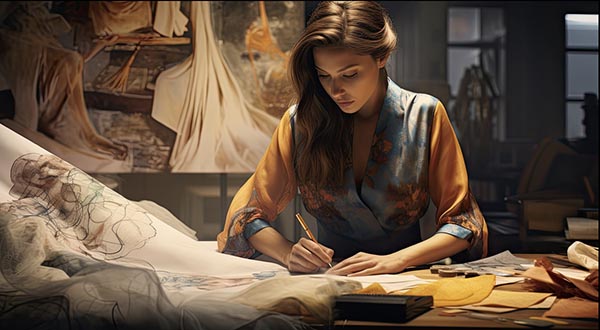
(Image courtesy of Texintel)
Guest Interview with Fulvio Alvisi, President Italian Textile Designers Association on behalf of Epson Italia
The Job of the Textile Designer in a Changing Industry
In a world where the digital transformation of the textile industry continues unstoppably, this coexists with a rethinking of the professions that have always gravitated around this industry.
What, for example, are the opportunities (but also the challenges) for future textile designers? We asked Fulvio Alvisi, owner of Alvisi e Alvisi—based in Como, Italy—since 1973. Alvisi has always been involved in association work and is also President of the Italian Textile Designers Association and Comocrea Expo s.r.l. and a member of the Board of Directors of Villa Erba s.p.a. Thanks to 40 years of experience, he is now the coordinator of the master’s degree course in Textile: Design, Innovation, and Sustainability at the Accademia di Belle Arti Aldo Galli.
Debbie McKeegan: What is the textile designer’s job and how has it evolved with the advent of digital printing?
Fulvio Alvisi: The textile designer is called upon to “trigger” the creative process, working on the idea that will then be refined along the supply chain.
What distinguishes them from the generic designer is their ability to interpret the indications coming from the market, anticipating with their choices the tastes and trends that will trigger consumers’ desire to buy the finished product. Digital printing has reached such a high level of sophistication that it can replicate the expressiveness, uniqueness, and accuracy of detail that used to be the exclusive prerogative of those who developed the design and graphics of a fabric by hand. Therefore, keeping up with the times requires an excellent command of the tools of the trade and an in-depth knowledge of present and past trends.
DM: What is the know-how required of a textile designer today?
FA: In addition to what I just said, there is sensitivity to eco-design. Today’s consumers have become familiar with the concept of sustainability and expect brands to make conscious choices to reduce environmental impact and waste, producing quality garments that can last.
This is an aspect that cannot be separated from the more technical skills of graphic design work.
Currently, the main challenge is not to find new shapes but to produce complex applications capable of transmitting three-dimensionality and involving the user from a sensorial point of view. Effectively communicating sustainability is an equally difficult task, which can be achieved by focusing on design work and the intrinsic characteristics of the raw material.
DM: What are the most innovative opportunities that digital printing is opening up?
FA: The advent of digital has provided greater flexibility as well as reduced production time and costs while expanding the creative possibilities of designers. One of the immediate consequences of this process has been the sudden growth of the phenomenon of upcycling, which we could describe as creative reuse. Once again, digital printing proved an excellent ally in enhancing pre-loved garments.
A concrete example of how technological innovation and sustainable creativity can open up enormous opportunities is Upcycling: with Epson, fashion becomes sustainable. It’s a project involving Epson, the Accademia di Belle Arti Aldo Galli, IED Network in Como, and greenchic, Italy’s number one marketplace for pre-loved fashion. Nine students from our Master’s course in sustainability selected some garments made available by greenchic and transformed them into new unique, original pieces, thanks to the customization possibilities offered by digital printing. To print the garments, they used an Epson SureColor SC-F100 dye sublimation printer. This is an easy-to-use technology that allows creatives to reappropriate the possibility of personalization directly on the garment—an activity that had gotten somewhat lost in the last decades of the previous century as the big fashion brands began to impose their specific creativity.
All these elements contribute to the emergence of new business models inspired by the second-hand economy, which is based on recovering and buying and selling second-hand goods. In short, there is a growing need to make the textile industry sustainable, encouraging the production of small quantities, re-shoring production, and reducing logistics costs.
DM: What does it mean to train textile designers today?
FA: The task of those who teach is to operate in an interdisciplinary logic, enabling young people approaching the profession to develop a very detailed overview of the entire supply chain, from design to production, without forgetting the post-consumer stages.
In addition to cultivating creativity, this must be implemented with the use of technical tools and the acquisition of soft skills, such as elements of marketing and communication, as well as the ability to work in a team, which is increasingly indispensable in today’s textile industry. The idea would be to acquire the “manual” skills related to drawing while still very young and then continue by fine-tuning all the other skills.
Added to this is the open-mindedness that allows you to understand cultural differences, assimilating and integrating different approaches into your designs.










Discussion
Join the discussion Sign In or Become a Member, doing so is simple and free